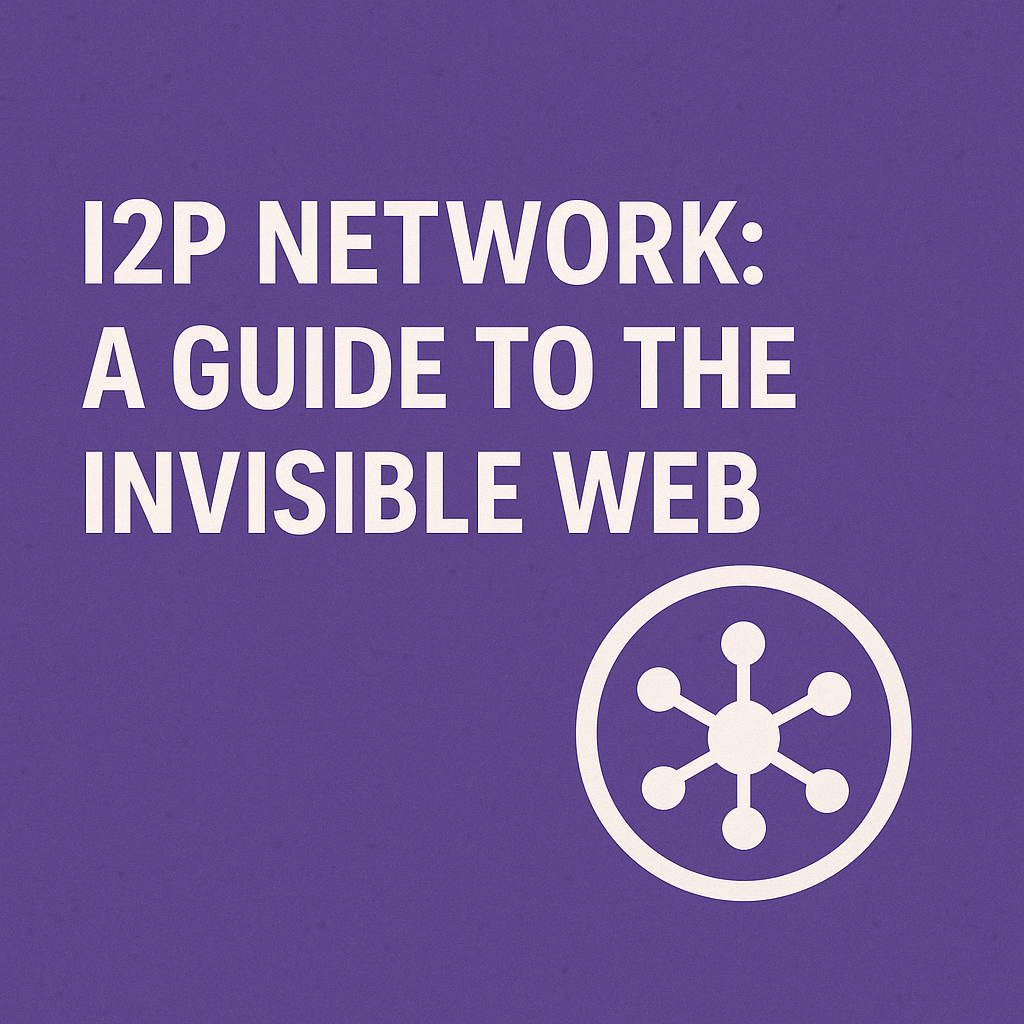
I2P Network: A Guide to the Invisible Web
|
|
Time to read 4 min

XBOX
PLAYSTATION
OTHER PLATFORMS
Hardware Wallets
Accessories
Others

Written by: Nearchos Nearchou
|
|
Time to read 4 min
In a world where online surveillance is rising and privacy is vanishing, digital tools that offer anonymity are gaining popularity. While many have heard of Tor, fewer are aware of its lesser-known counterpart — the Invisible Internet Project (I2P). This article dives deep into the I2P network, explaining what it is, how it works, and why it's one of the darknet’s most powerful privacy tools.
I2P, short for Invisible Internet Project, is an open-source, privacy-focused communication layer that enables anonymous browsing, messaging, file sharing, and hosting of websites (called eepsites) — all within its own encrypted network.
Unlike standard internet usage, where data flows over publicly visible paths, I2P creates a closed network of encrypted traffic, keeping both users and their activities hidden. It’s not just a tool to access the darknet — it is a darknet in itself.
I2P uses advanced technologies like garlic routing and tunnel building to anonymize traffic. It splits all data into encrypted packets and routes them through multiple nodes across the globe. Unlike Tor, which is designed to reach the clearnet anonymously, I2P is focused on internal privacy — everything stays within the I2P ecosystem.
Garlic routing is similar to onion routing (used by Tor) but bundles multiple messages together in a single transmission — like cloves in a garlic bulb. This method enhances both speed and anonymity.
Although both I2P and Tor promote anonymity, they serve slightly different purposes and use different routing techniques. Here's a side-by-side comparison:
|
Feature |
I2P |
Tor |
|
Routing |
Garlic Routing |
Onion Routing |
| Use Case |
Internal darknet communication |
Accessing clearnet + .onion sites |
| Exit Nodes |
No (no clearnet access) | Yes (can browse standard internet) |
| Speed |
Often faster for internal traffic | Slower due to larger user base |
| Network Focus |
Peer-to-peer, decentralized |
Client-server, centralized relays |
| Common Uses |
Anonymous sites (.i2p), P2P, messaging |
Clearnet anonymity, hidden services |
I2P isn't just a browsing tool — it's a full suite of privacy-focused services. Here's what you can do inside the network:
These are anonymous websites hosted within the I2P network. They use the .i2p domain and are completely inaccessible from the clearnet without special configuration.
I2P supports secure mail and chat services like I2P-Bote and I2P Messenger, which are encrypted and designed to resist surveillance.
Through tools like I2PSnark (a BitTorrent-like client), users can share files without revealing their IP addresses or identities.
I2P supports decentralized applications (dApps), hidden IRC networks, and even forums for private community discussions.
Getting started with I2P is straightforward. Here’s how to join the invisible web:
Download I2P from the official website.
Install and run the software on your system.
Access the I2P Router Console at http://127.0.0.1:7657/.
Use the built-in proxy configuration to access .i2p websites.
Start exploring the invisible internet!
💡 Note: I2P works best with Firefox, configured to use I2P’s proxy.
I2P isn’t just for tech-savvy privacy buffs. It offers real-world benefits across various fields:
I2P can help secure communications, enabling safe contact with sources in repressive regions.
Studying darknet activity, censorship circumvention, or privacy models? I2P is a goldmine.
Coordinate and communicate safely without being tracked by governments or third parties.
Those who care about digital rights, anonymity, or simply avoiding trackers can use I2P for everyday privacy.
Yes — in most countries, using I2P is legal . It’s an open-source network and a tool for privacy, not inherently linked to criminal activity. However, as with any tool, its legality can be questioned based on intent and use.
⚠️ Always ensure you are complying with your local laws and regulations.
No tool is perfect, and I2P is no exception. Here are some considerations:
Limited Access to the Clearnet: I2P isn’t designed for browsing mainstream websites.
Smaller User Base: Fewer users mean fewer hosted sites and services compared to Tor.
Learning Curve: Setting up and configuring I2P correctly requires a bit of technical knowledge.
Not Foolproof: Like all privacy tools, I2P can be compromised if misused (e.g., logging into personal accounts).
Here are a few well-known eepsites inside I2P:
|
Name |
Description |
| Stats.i2p |
View real-time I2P network statistics |
| I2P Forum |
Anonymous discussions and tech support |
| Postman.i2p |
Anonymous email system (I2P-Bote) |
| I2P Wiki | Guides, documentation, and FAQs |
🌐 Note: These can only be accessed from within the I2P network.
If you're serious about online privacy, avoiding surveillance, or exploring anonymous communities, I2P is absolutely worth exploring. While it’s less popular than Tor, its architecture offers greater internal privacy, faster communication within its own ecosystem, and support for anonymous services.
Whether you're an activist, a developer, or simply a curious internet user, the Invisible Internet Project represents the cutting edge of darknet privacy tools.
The I2P network, also known as the Invisible Internet Project, is a secure, private alternative to conventional internet browsing. With features like garlic routing, anonymous services, and decentralized applications, I2P empowers users to communicate freely without fear of surveillance or censorship. Though it has its challenges, it’s a must-know tool in the evolving landscape of online privacy.
Nearchos Nearchou
Nearchos Nearchou is a determined person and 1st Class BSc (Hons) Computer Science and MSc Cyber Security graduate. He is a big tech-lover and spent several years exploring new innovations in the IT field. Driven by his passion for learning, he is pursuing a career in the Cyber Security world. Passionate about learning new skills and information that can be used for further personal and career development. Finally, he is the author of the book “Combating Crime On The Dark Web”.
Stay updated with our latest posts and deals! 📬
| Price |
|---|
| SKU |
| Rating |
| Discount |
| Vendor |
| Tags |
| Weight |
| Stock |
| Short Description |
Description here
Description here
